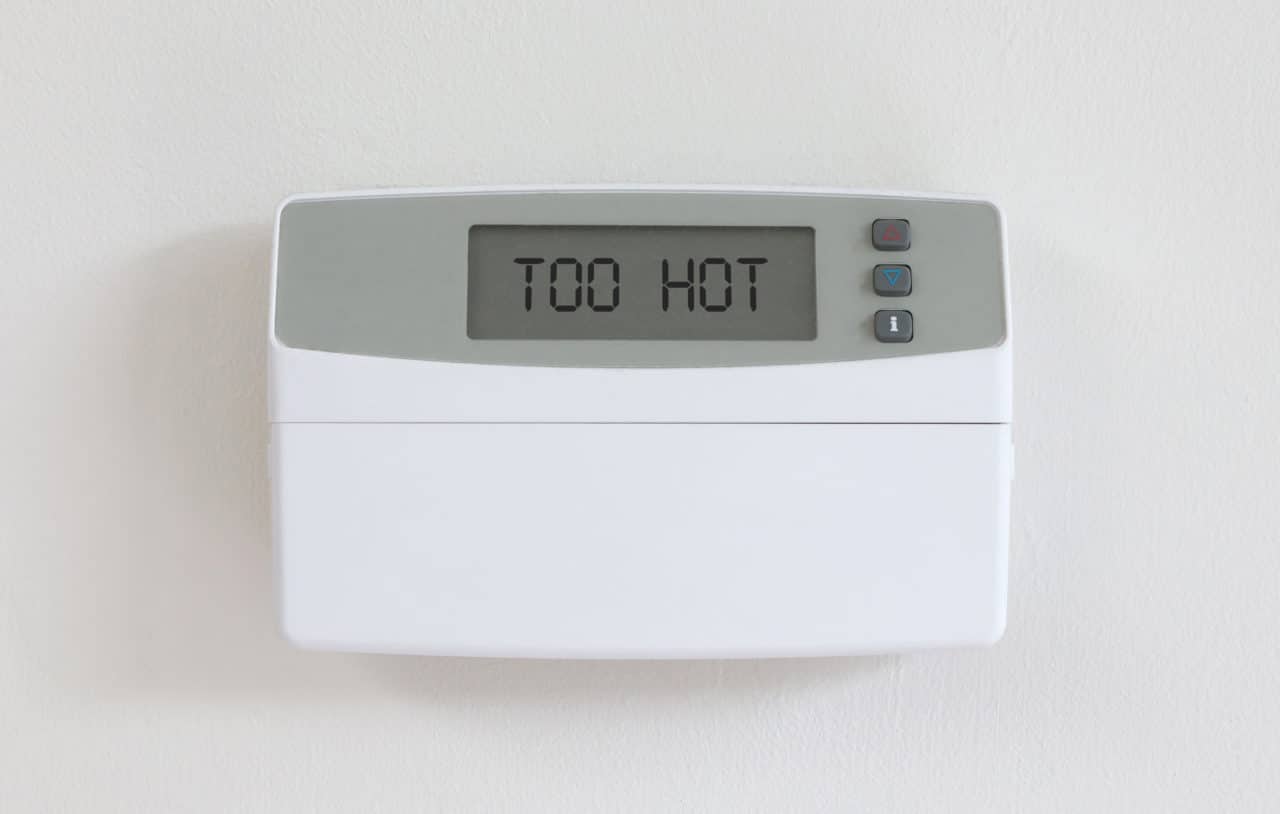Have you ever had the experience of an unusually hot bedroom in the middle of a cold night? You wake up with sweat dripping off your forehead and stumble out into the hallway, only to find it much cooler…
You’re not alone in the struggle for consistent temperatures. Many of us have experienced rooms that are hotter or colder than others.
If you want to get that perfect temperature throughout your house, the first step is to understand why this happens. Read on to learn why some rooms get hotter than others and a few professional recommendations on how to fix it.
1. Uneven airflow
A common culprit of inconsistent temperatures is uneven airflow. Depending on the configuration of your home and the positioning of vents, some rooms may get more cool or hot air than others.
If all your vents are open, but one room still seems too hot or cold, it’s likely because there’s not enough airflow to balance the temperature in that space.
The simple solutions for uneven airflow are:
- Keep doors open that are normally closed
- Invest in fans to circulate the air
- Clean air filters that might be blocking airflow
- Check all your vents to make sure there are no obstructions from your furniture
A zoned HVAC system is also a great option for your home. This way, you can control the temperature in different zones for maximum efficiency and comfort.
2. Damaged ductwork
Your ductwork carries air around your home so that any damage may cause hot spots in certain rooms. Check for rips and holes in the ducts, and make sure there are no broken seals. Even minor ductwork damage can cause a major disruption in airflow and temperature balance.
3. Insulation issues
Behind your walls and ceilings, your home should have plenty of insulation to keep the temperature consistent. But if your home is older, the insulation may have deteriorated over time (allowing hot air to escape). In this situation, you’ll want to replace the insulation. Click through to learn more about what you can expect from the current cost of replacing your insulation.
You might also have an attic, basement, or garage that completely lacks insulation. This can cause hot spots too. If that’s the case, you’ll want to install new insulation to keep the temperatures consistent.
4. Leakage from outside
If you’re having an issue with hot spots, you may have a problem with air leaking in from outside.
This happens when the weather stripping around your windows and doors is worn out, creating gaps that let in the less-than-comfortable outdoor air. Besides hot air sneaking in during the summer months, you might also notice cold drafts during the winter.
To prevent air leakage, you’ll want to inspect your weatherstripping for any gaps and seal them up.
5. Wrong size HVAC system
Your heating, ventilation, and air conditioning (HVAC) system may also be the culprit for why some of your rooms are hotter or colder than others. If you have an oversized air conditioning unit, it will cycle off before it has a chance to reach the desired temperature. And if you have an undersized system, you will need help to keep up with the cooling demand.
If your HVAC system is not the right size for your home, you’ll want to upgrade to one that fits your needs and meets the square footage demands of your house.
6. Natural light from windows
“Plenty of windows to let in natural light” might have been a great selling point when you moved into your home. But now you’re suffering with overly hot rooms…
Sunlight is a huge factor in temperature differences between different rooms in your home. Rooms that receive direct sunlight throughout most of the day will be much warmer than those that don’t receive direct sunlight.
Black-out curtains or blinds are an affordable solution for cooling a room with a lot of sunlight.
7. Square footage and layout
The size of your home was a significant factor in your decision to buy it. But square footage and floor plan can also play a major role in temperature differences between rooms. If you have one much bigger room than the others, it will take more time for the air conditioning or heating to reach its desired temperature.
And if your house is laid out so that some rooms don’t receive enough airflow (like rooms located at the end of a hallway), then those spaces may be much hotter than the rest of your home.
Homes that have had additions may also experience temperature imbalances.
Upgrade to a zoned HVAC system with Lee Company
Upgrading to a zoned HVAC system or adding a mini-split to specific rooms are the best solutions to this problem. Both of these options allow you to adjust temperatures in only the areas that need it.
No matter why some of your rooms are hotter or colder than others, Lee Company is here to help. We provide heating and cooling services to keep your home comfortable all year long. From simple filter changes to more complex repairs and replacements, our team of experts is here for all your HVAC needs!
Interested in upgrading to a zoned HVAC system?
CALL US NOW AT 615.567.1000

